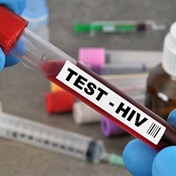The finding pushes back the origin of the human immunodeficiency virus (HIV) by several decades, they reported in the journal Nature.
Researchers think the growth of cities - and high-risk behavior associated with urban life - may have helped the virus to flourish. There is no cure for Aids, which is most commonly transmitted through sexual contact.
Prior estimates put the origin of HIV at 1930. But Michael Worobey of the University of Arizona in Tucson now believes HIV began infecting humans between 1884 and 1924.
How the research was done
The research is based on 48-year-old gene fragments dug from a wax-embedded lymph node from a woman in Kinshasa in the Democratic Republic of Congo, formerly Zaire. The 1960 sample is the second-oldest genetic sequence of HIV-1 group M, the main strain of the virus responsible for the Aids pandemic.
The oldest sequence came from a 1959 blood sample given by a man in Kinshasa, formerly known as Leopoldville. "Once you have two you can line them up and compare them," Worobey said. "Once you do that, you see these two sequences are very different. That means the virus had already been there for a long time even by 1959 or 1960."
Putting the two samples together with dozens of other previously known HIV-1 genetic sequences, the researchers constructed family trees for this strain of HIV.
"Those old sequences helped calibrate the molecular clock, which is essentially the rate at which mutations accumulate in HIV," Worobey said. "Once you have that rate, you can work backward and make a guess of when the ancestor of the whole pandemic strain of the Aids virus originated. It is that ancestor we are dating to 1908 plus or minus about 20 years."
Study gives hope
Research from chimpanzee droppings suggests the virus first spread from chimps to humans in southeastern Cameroon. Worobey thinks the disease spread slowly among the local population until one of the infected people went to Kinshasa, where it had more opportunity to spread.
Worobey thinks by the 1960s, several thousand people may have been infected with HIV. By 1981, the rest of the world began to recognize the pandemic, which has now infected 33 million people and killed 25 million.
But Worobey sees some hope in the study. "HIV is one of these pathogens that you could almost think of as living on the edge of extinction," he said.
If it had not been carried to a city, it may not have survived the jump to humans. "It means there are things we could do to actually make it so that it doesn't have a chance of spreading," Worobey said.
Disease prevention is one of the most important issues in HIV, said Dr Anthony Fauci, director of National Institute of Allergy and Infectious Diseases, which help fund the research.
"For every one person that we put on therapy, two to three people in the developing world get newly infected," he said. "The only way we are going to get our arms around this is through prevention." – (Reuters Health, October 2008)
Read more:
African malaria gene ups HIV risk
ARVs slash Aids death rate




 Publications
Publications
 Partners
Partners










